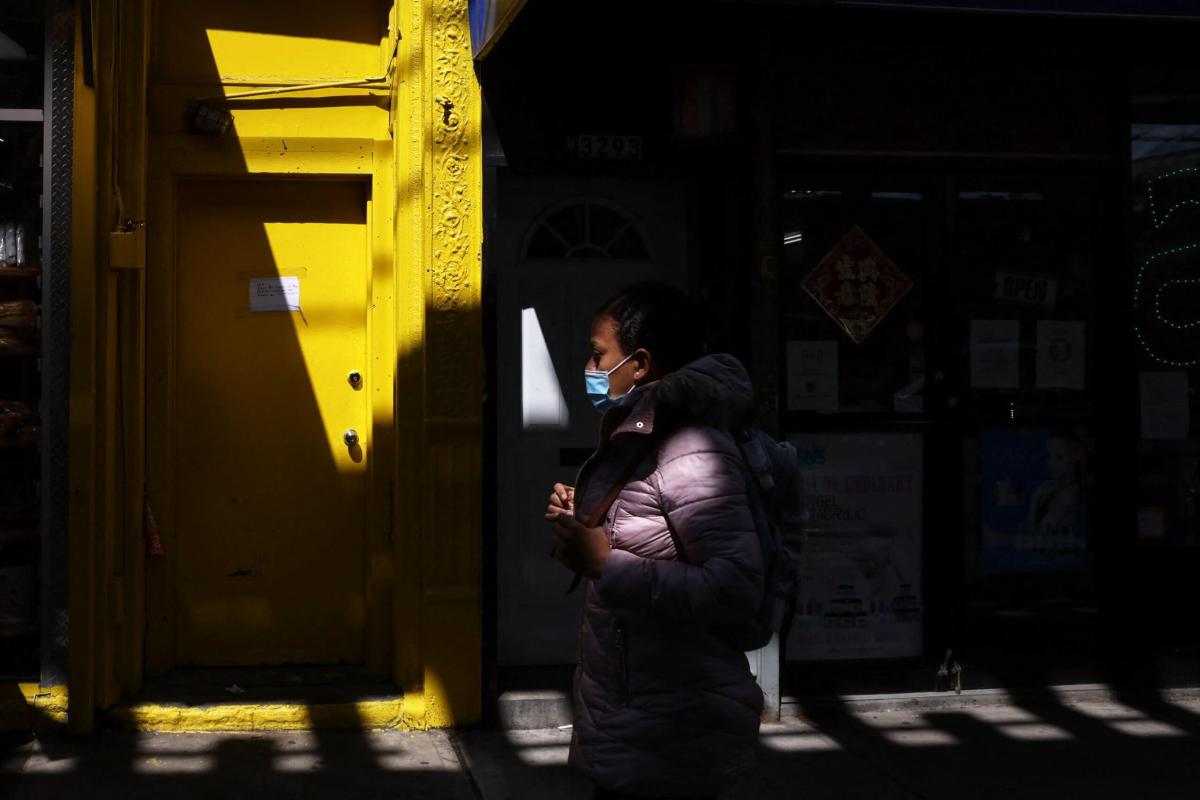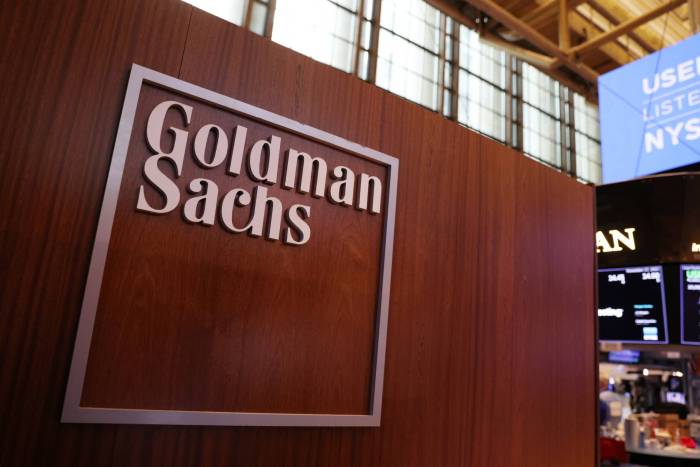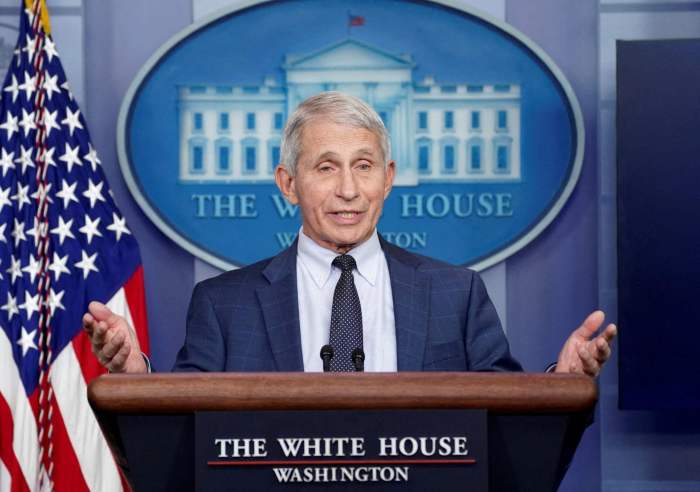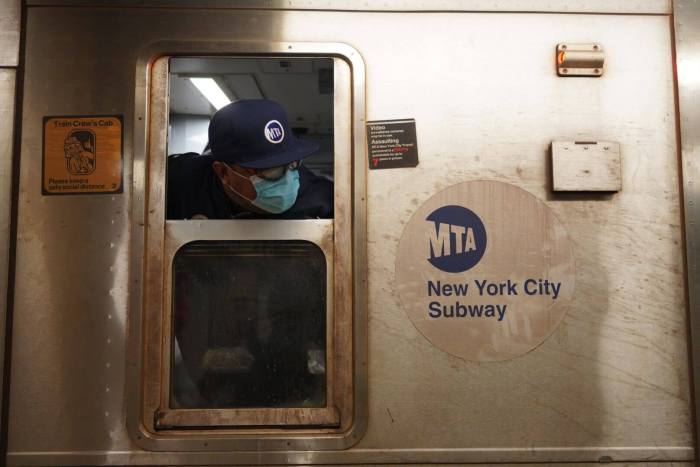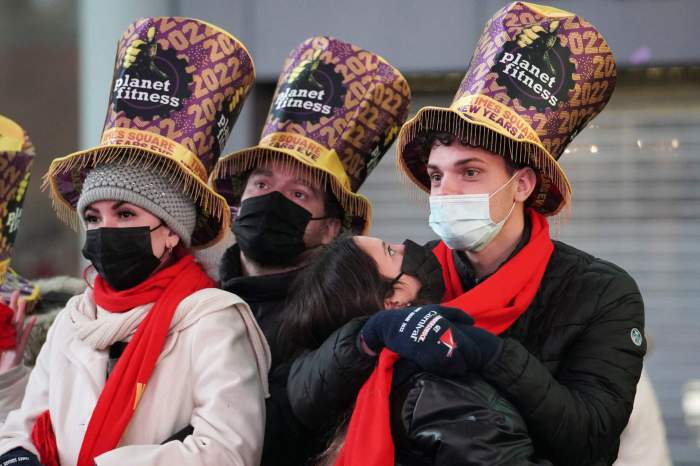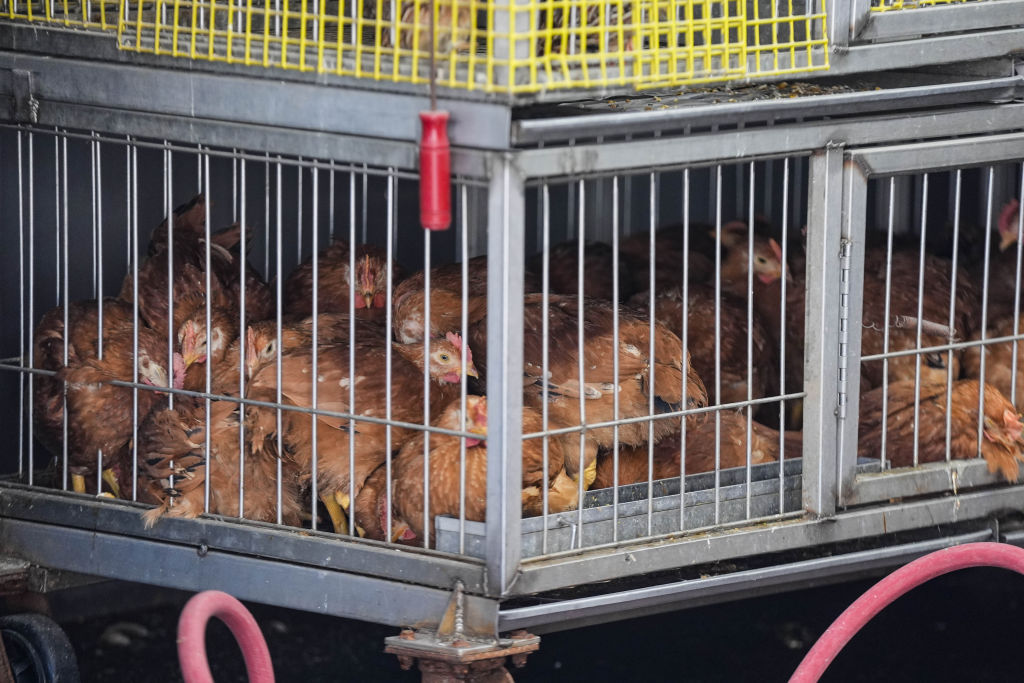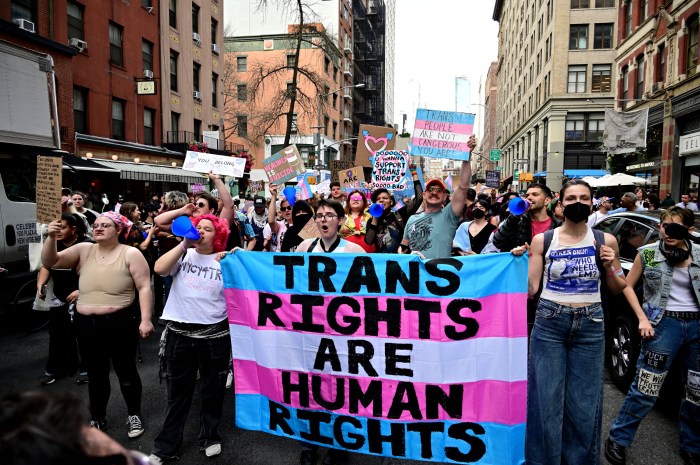COVID-19 cases are back on the rise across the city, particularly in Manhattan and parts of Brooklyn — but so far, it’s nothing close to the kind of spike the city experienced during the holiday season.
According to the city’s Department of Health and Mental Hygiene, the city’s 7-day positivity rate was up to 2.67% on April 1, with an average daily case total of 1,254. The increases, however, were slight compared to a week prior, when the 7-day positivity rate stood at 2.26% with a weekly average case total of about 906.
The increase can be attributed to the spread of the BA.2 subvariant of the COVID-19 Omicron variant, which is much more contagious, though apparently not as potent.
The recent uptick in infections prompted Mayor Eric Adams on Friday to delay by at least a week his planned discontinuance of the mask mandate for preschool students under 5 years of age across the city. No other preemptive measures to slow the spread have been ordered, as of yet, though that could change depending on virus case volume in the weeks ahead.
One potentially promising sign is that the citywide transmission rate has only grown slightly, not exponentially, in the past week — rising from 90.33 cases per 100,000 residents on March 27 to 105.26 per 100,000 on April 1.
Manhattan continues to have the highest transmission rate of the Five Boroughs, at 193.04 per 100,000. Brooklyn’s rate was nominally higher than the citywide total, at 105.86 per 100,000; the other three boroughs were below the citywide average.
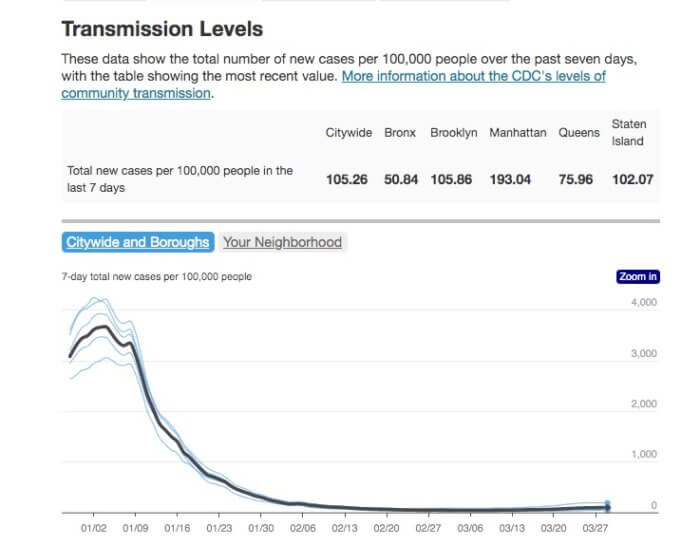
Ten communities — six in Manhattan, four in Brooklyn — saw 100 or more new COVID-19 cases diagnosed between March 23-29. East Williamsburg/Williamsburg (ZIP code 11211) stood at the top of the list with 153 new cases.
That was followed by Manhattan Valley/Morningside Heights/Upper West Side (10025, 149 cases); Brooklyn Heights/DUMBO/Downtown Brooklyn (11201, 148 cases); Lincoln Square (10023, 129 cases); and Chinatown/Lower East Side (10002), Gowanus/Park Slope/Windsor Terrace (11215) and Clinton Hill/Prospect Heights (11238), each of which tallied 116 new cases.
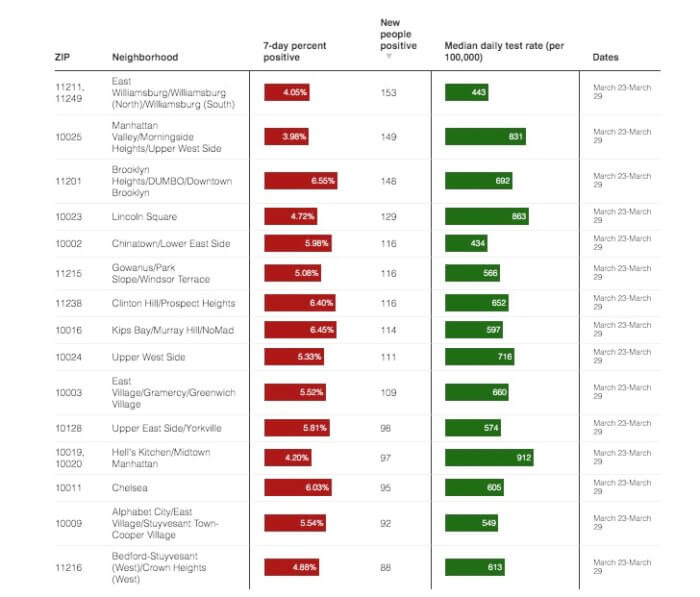
The Hunters Point section of Long Island City, Queens (11109) had the highest 7-day positivity rate in the Five Boroughs between March 23-29 at 7.88%, but just 19 new cases were detected there during the period.
Three other New York City communities had 7-day rates exceeding 7%, all of which were in Manhattan: Battery Park City (10282, 7.27%, 12 new cases); Hudson Square/Meatpacking District/West Village (10014, 7.26%, 58 new cases); and Hudson Square/Little Italy/SoHo/Tribeca (10013, 7.12%, 73 new cases).
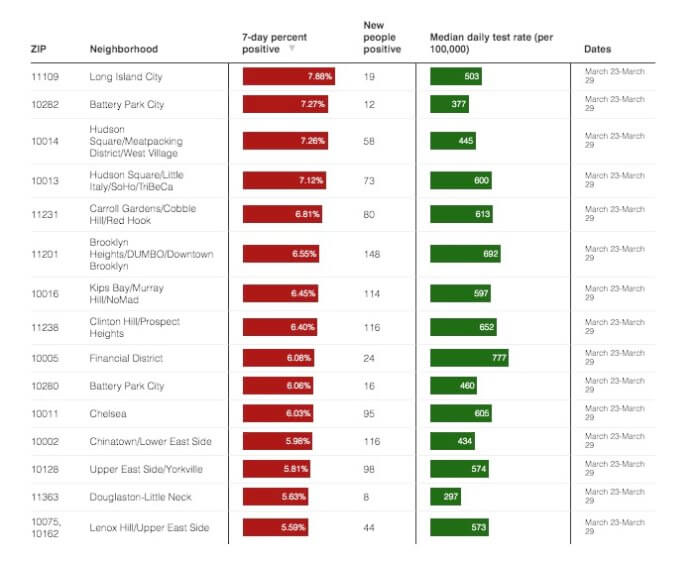
The most encouraging statistics are that hospitalizations and deaths connected to COVID-19 continue to drop even as cases tick upward. The citywide daily hospitalization total was down to 13 on April 1, while the daily death total was only four that same day.
In fact, on March 29, the city Health Department preliminarily tallied no COVID-19 hospitalizations or deaths.
Vaccinations and the availability of new treatments and antiviral medication continue to help save lives. The city, however, continues to lag behind on boosters; only 36.6% of all New York City residents have received an additional dose of the vaccine.
Health experts have said getting the booster helps increase a person’s chances of resisting COVID-19 infection, or only experiencing mild symptoms if they do contract it. Moreover, second booster shots are now recommended for people 50 years of age and older and those who are seriously immunocompromised.
To find out where to get a booster, visit vaccinefinder.nyc.gov.



